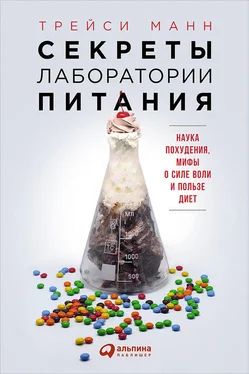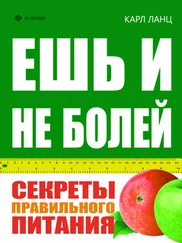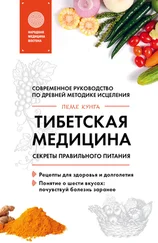С Мэрихоуп Хауланд и менеджером моей лаборатории Тони Габриелли.
В Кембриджском университете Тереза Мартеу и сотрудники ее лаборатории тоже обнаружили, что слово «полезные» не побуждает людей выбирать яблоки чаще, а вот сочетание слов «полезные и сочные» такой эффект оказывает. Suzanna E. Forwood et al., «Choosing between an Apple and a Chocolate Bar: The Impact of Health and Taste Labels», ed. Sidney Arthur Simon, PloS One 8, no. 10 (January 2013): e77500, doi:10.1371/journal.pone.0077500.
Finkelstein and Fishbach, «When Healthy Food Makes You Hungry».
Эксперимент не обошелся без хитрости. На самом деле оба сэндвича вредны, но участники считают, что вреден только бигмак, а сэндвич из Subway полезен. P. Chandon and Brian Wansink, «The Biasing Health Halos of Fast Food Restaurant Health Claims: Lower Calorie Estimates and Higher Side Dish Consumption Intentions», Journal of Consumer Research 34, no. October (2007): 301–14.
Отличный эксперимент. Его результаты повлияли на развитие науки о питании. Ни один преподаваемый мной курс, касающийся пищевого поведения, психологии здоровья или методологии исследований, не обходится без его обсуждения. Herman and Mack, «Restrained and Unrestrained Eating».
Janet Polivy and C. Peter Herman, «Dieting and Binging: A Causal Analysis», American Psychologist 40, no. 2 (1985): 193–201.
С Джанет Томияма и Эшли Москович.
Janet Tomiyama et al., «Consumption after a Diet Violation: Disinhibition or Compensation?», Psychological Science 20, no. 10 (October 2009): 1275–81, doi:10.1111/j.1467–9280.2009.02436.x.
Ravi Dhar and Itamar Simonson, «Making Complementary Choices in Consumption Episodes: Highlighting Versus Balancing», Journal of Marketing Research (1999): 29–44.
Kentaro Fujita et al., «Construal Levels and Self-Control», Journal of Personality and Social Psychology 90, no. 3 (March 2006): 351–67, doi:10.1037/0022-3514.90.3.351.
Tinuke Oluyomi Daniel, Christina M. Stanton, and Leonard H. Epstein, «The Future Is Now: Reducing Impulsivity and Energy Intake Using Episodic Future Thinking», Psychological Science 24, no. 11 (November 1, 2013): 2339–42, doi:10.1177/0956797613488780.
K. Fujita and J. J. Carnevale, «Transcending Temptation Through Abstraction: The Role of Construal Level in Self-Control», Current Directions in Psychological Science 21, no. 4 (July 25, 2012): 248–52, doi:10.1177/0963721412449169.
Wansink, van Ittersum, and Painter, «How Descriptive Food Names Bias Sensory Perceptions in Restaurants».
Walter Mischel and Nancy Baker, «Cognitive Appraisals and Transformations in Delay Behavior», Journal of Personality and Social Psychology 31, no. 2 (1975): 254.
Помните, я сказала, что всего один из 300 социальных психологов, прибывших на конференцию, догадался, что мы проводим эксперимент (с яблоками)? Это был Кен Фудзита. Ничего от него не утаишь.
Kentaro Fujita and H. Anna Han, «Moving Beyond Deliberative Control of Impulses: The Effect of Construal Levels on Evaluative Associations in Self-Control Conflicts», Psychological Science 20, no. 7 (July 1, 2009): 799–804, doi:10.1111/j.1467–9280.2009.02372.x; Kentaro Fujita, «Seeing the Forest Beyond the Trees: A Construal-Level Approach to Self-Control», Social and Personality Psychology Compass 2, no. 3 (May 2008): 1475–96, doi:10.1111/j.1751–9004.2008.00118.x.
Fujita and Han, «Moving Beyond Deliberative Control of Impulses».
Jon Henley, «Merde Most Foul», Guardian , April 12, 2002, http://www.theguardian.com/world/2002/apr/12/worlddispatch.jonhenley.
Suzanne Daley, «Budget Cuts May Foul Sidewalks of Paris», New York Times , November 6, 2001, http://www.nytimes.com/2001/11/06/world/budget-cuts-may-foul-sidewalks-of-paris.html.
D. Neal, W. Wood, and J. Quinn, «Habits – A Repeat Performance», Current Directions in Psychological Science 15, no. 4 (2006): 198–202; Judith A. Ouellette and Wendy Wood, «Habit and Intention in Everyday Life: The Multiple Processes by Which Past Behavior Predicts Future Behavior», Psychological Bulletin 124, no. 1 (1998): 54–74, doi:10.1037//0033-2909.124.1.54; Wendy Wood and David T. Neal, «A New Look at Habits and the Habit-Goal Interface», Psychological Review 114, no. 4 (October 2007): 843–63, doi:10.1037/0033-295X.114.4.843.
Я значительно упрощаю информацию, полученную из большого объема исследовательской литературы, посвященной сравнению автоматического и контролируемого поведения. Интересный обзор можно найти в работе: J. A. Bargh and M. J. Ferguson, «Beyond Behaviorism: On the Automaticity of Higher Mental Processes», Psychological Bulletin 126, no. 6 (November 2000): 925–45.
Joanna Robertson, «The Pampered Pooches of Paris», BBC, 2011, http://www.bbc.co.uk/news/magazine-16268890.
В этой обстоятельной статье описываются десятки исследований, доказавших, что наши намерения редко совпадают с реальным поведением: Thomas L. Webb and Paschal Sheeran, «Does Changing Behavioral Intentions Engender Behavior Change? A Meta-Analysis of the Experimental Evidence», Psychological Bulletin 132, no. 2 (March 2006): 249–68, doi:10.1037/0033-2909.132.2.249.
Phillippa Lally et al., «How Are Habits Formed: Modelling Habit Formation in the Real World», European Journal of Social Psychology 40, no. 6 (October 16, 2010): 998–1009, doi:10.1002/ejsp.674.
Heather Barry Kappes and Gabriele Oettingen, «Positive Fantasies about Idealized Futures Sap Energy», Journal of Experimental Social Psychology 47, no. 4 (July 2011): 719–29, doi:10.1016/j.jesp.2011.02.003.
Если сравнивать с теми, кому удалось визуализировать достигнутое. Shelley E. Taylor et al., «Harnessing the Imagination: Mental Simulation, Self-Regulation, and Coping», American Psychologist 53, no. 4 (1998): 429–39.
Читать дальше
Конец ознакомительного отрывка
Купить книгу












